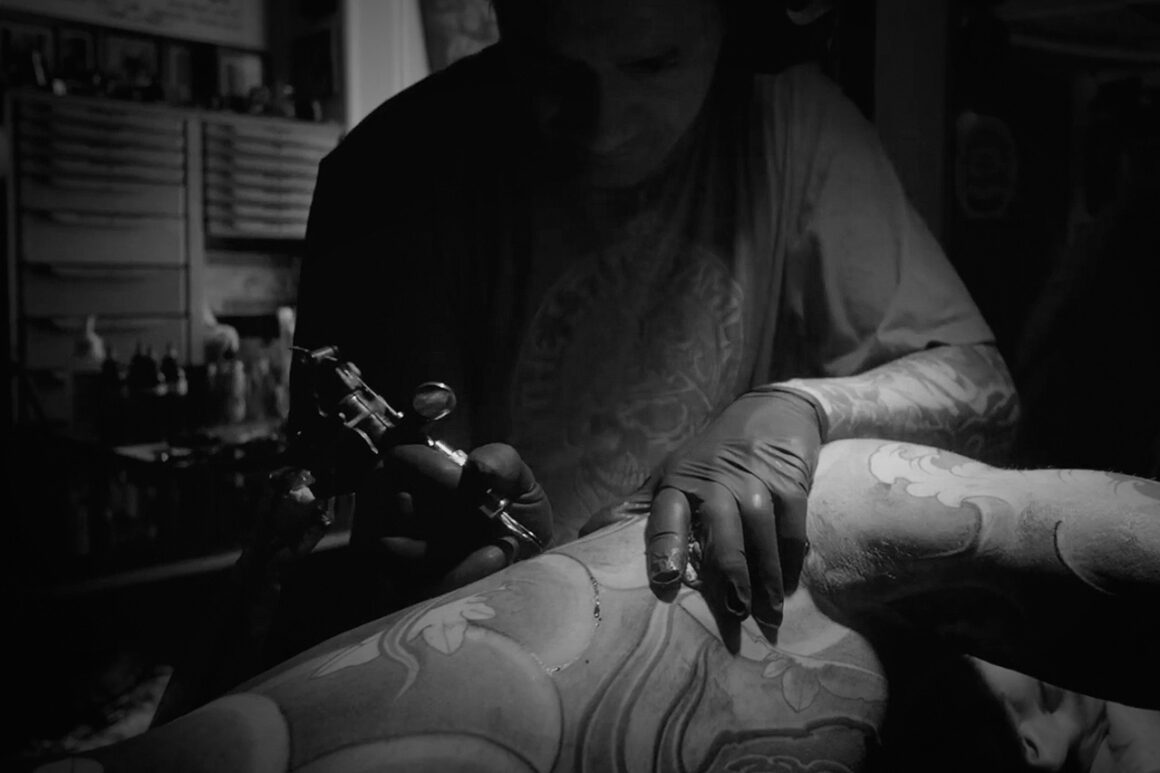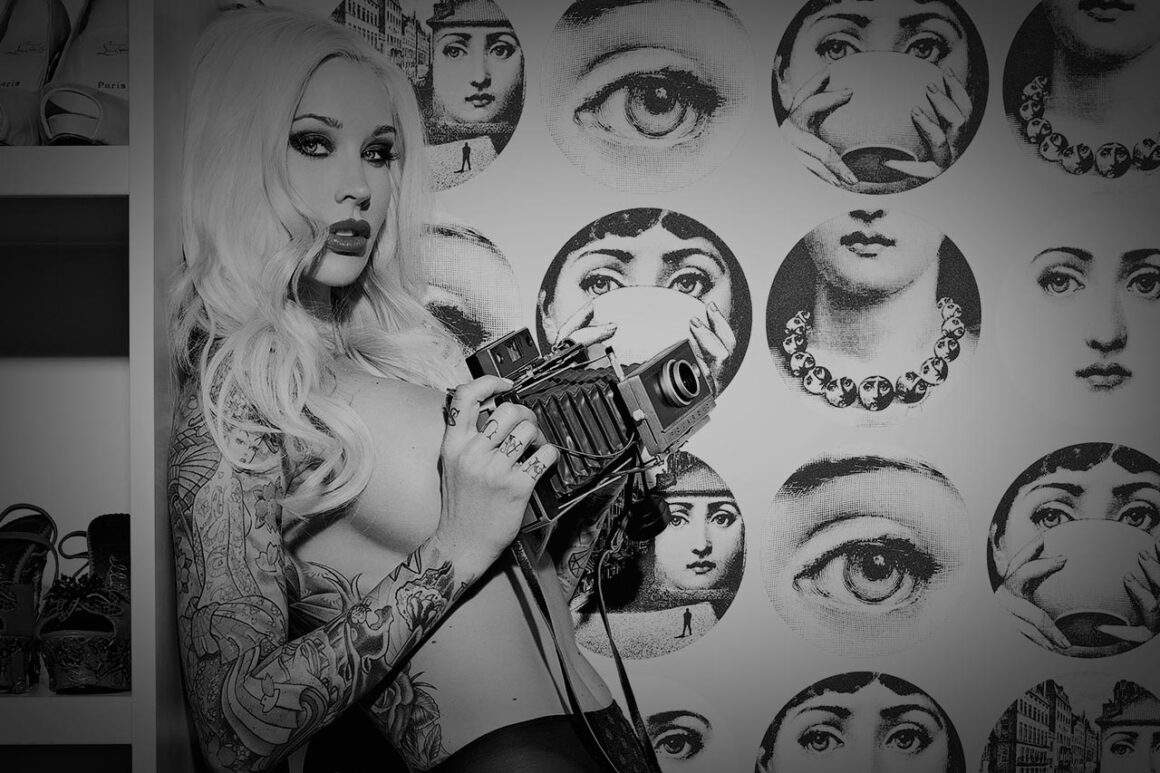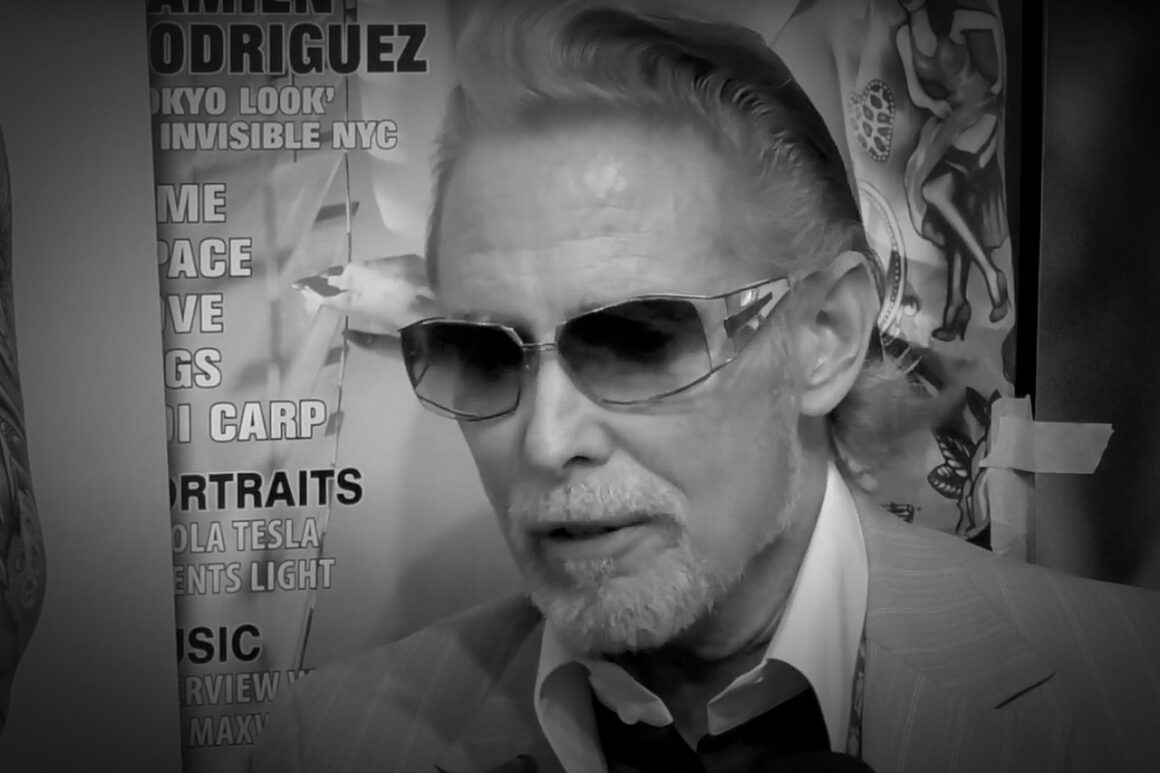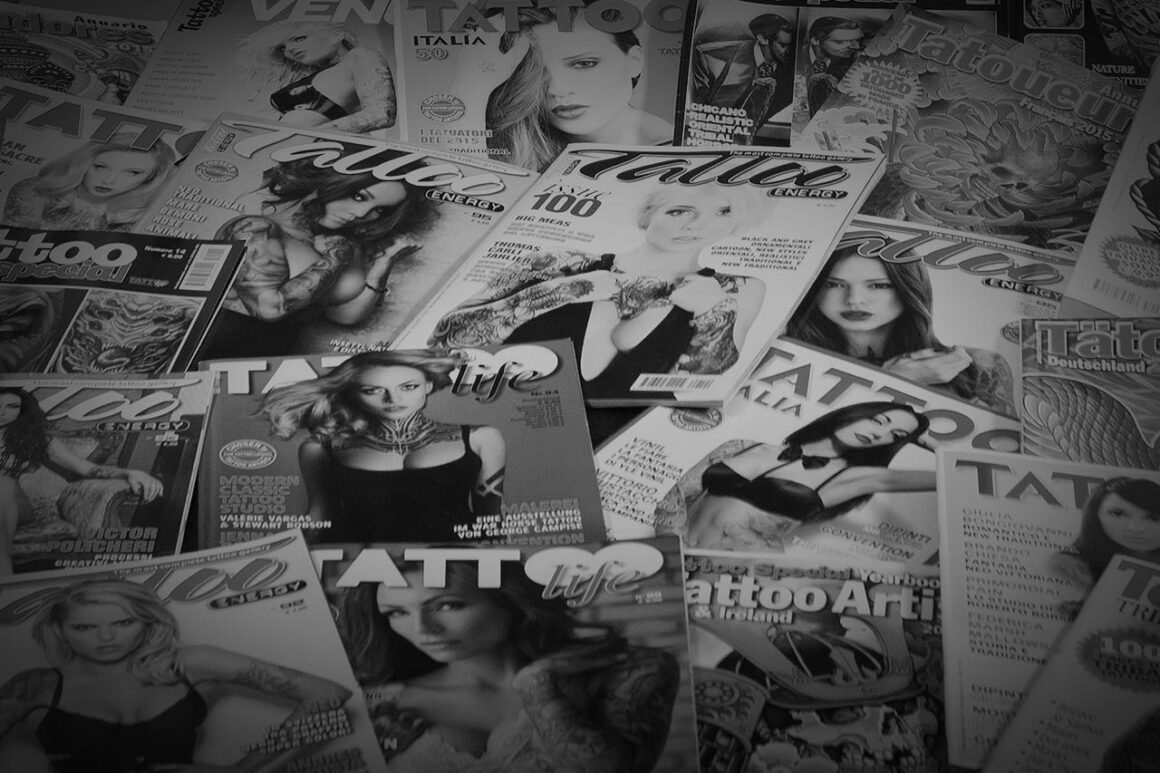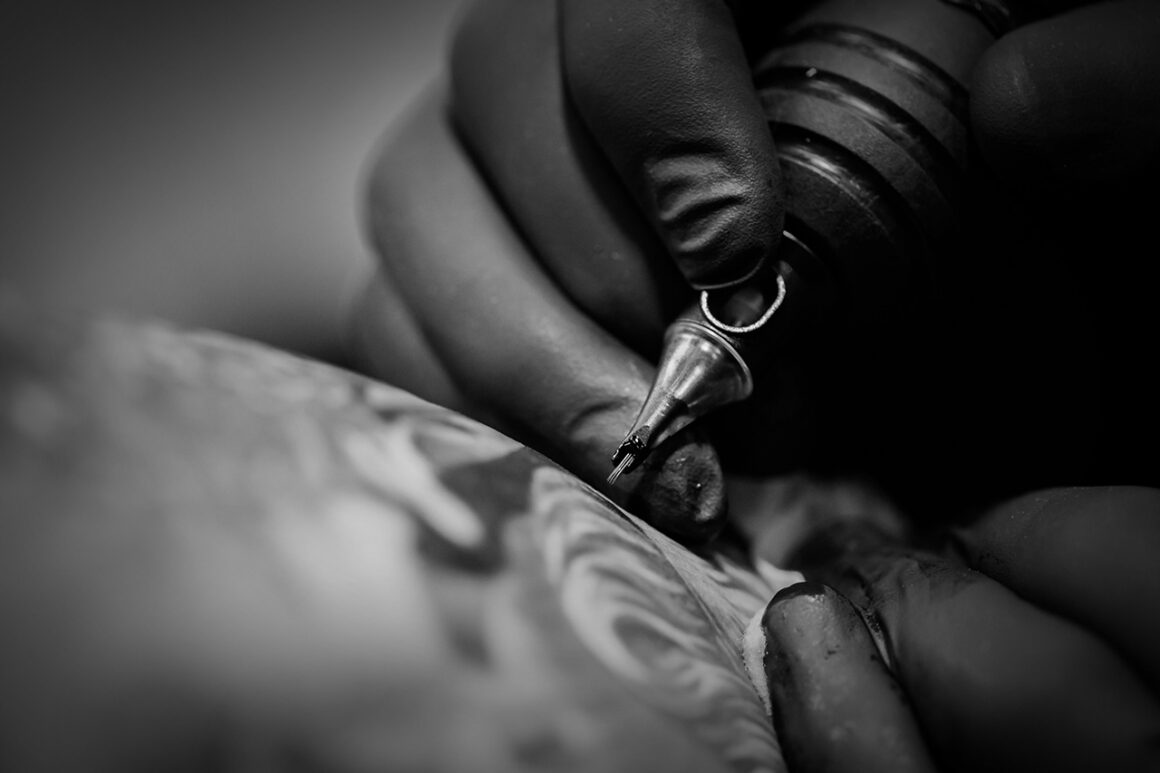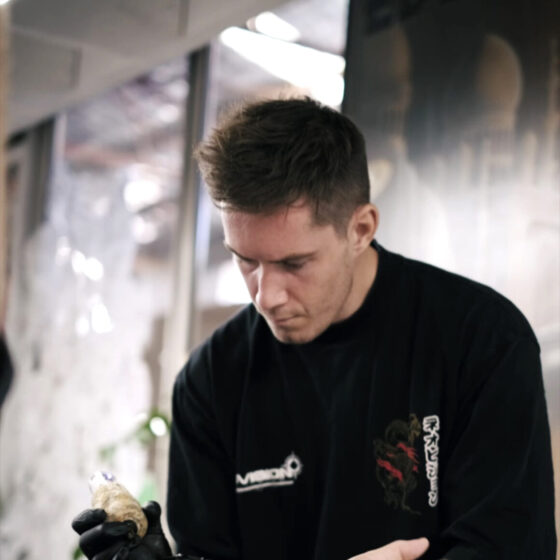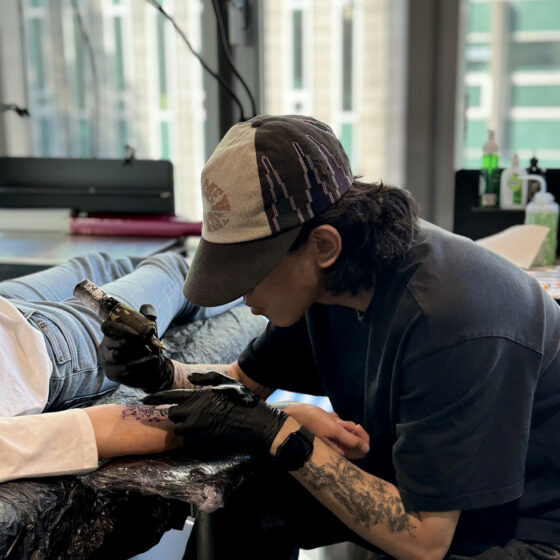The pictures are simply stunning: dozens and dozens of full-body tattoos on men and women, executed with the utmost precision and detail, a true feast for the eyes.
We’ve seen similar images from Japanese grandmasters of Irezumi, who gather their clients for a final photo shoot upon retirement, documenting a lifetime of work dedicated to traditional bodysuits. Sometimes, participants of world-class tattoo events also come together for impressive group photos like these, commemorating moments when great tattooists from around the world unite to celebrate the art of tattooing.
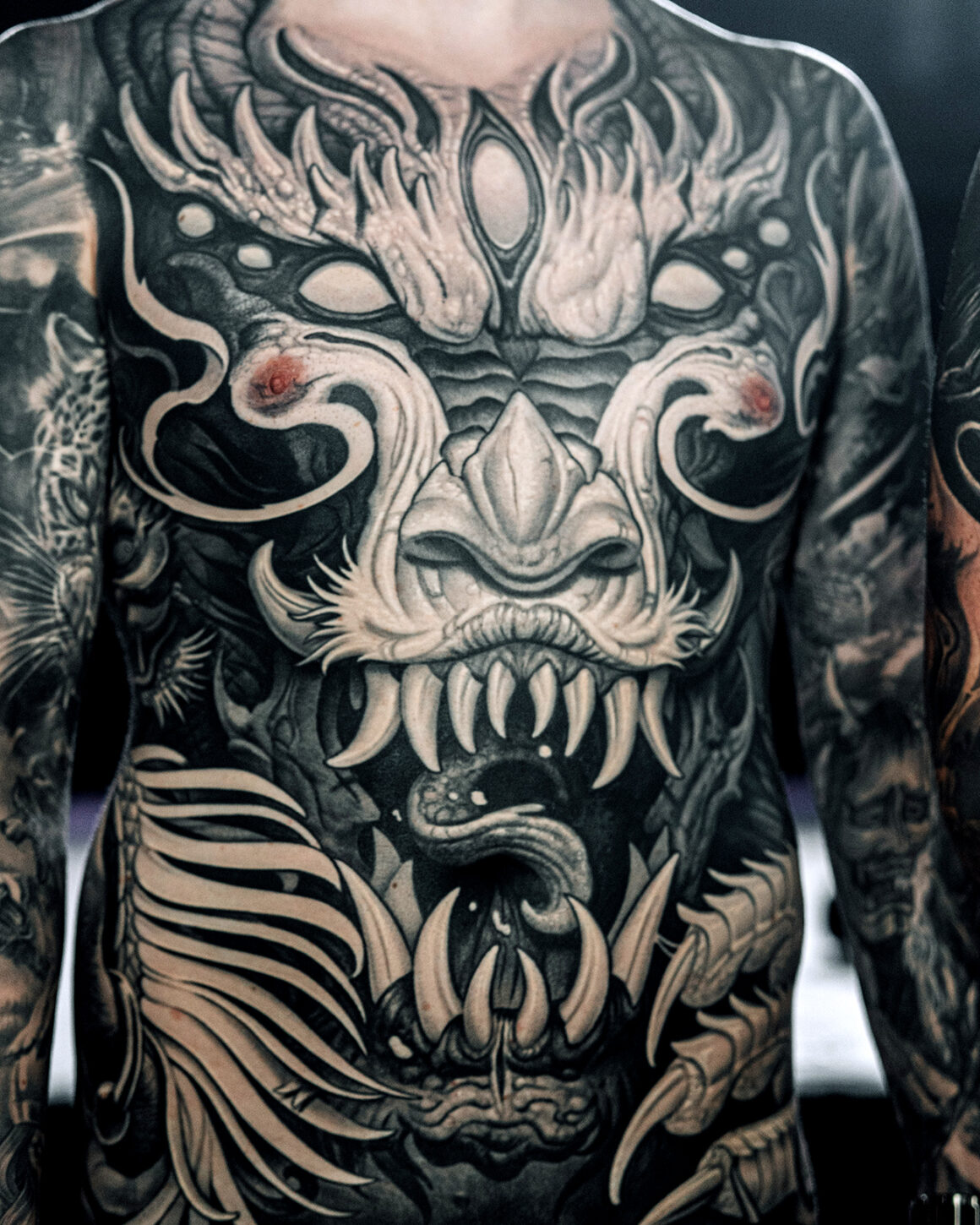
But these pictures here are different; they’re not group shots of random visitors at a tattoo convention, nor do they show the lifetime achievement of an elderly tattoo grandmaster who is about to retire. These photos showcase the creative output – or rather, a small fraction of it – from just twenty years in the tattoo career of an outstanding German artist from Munich: the amazing Julian Siebert.
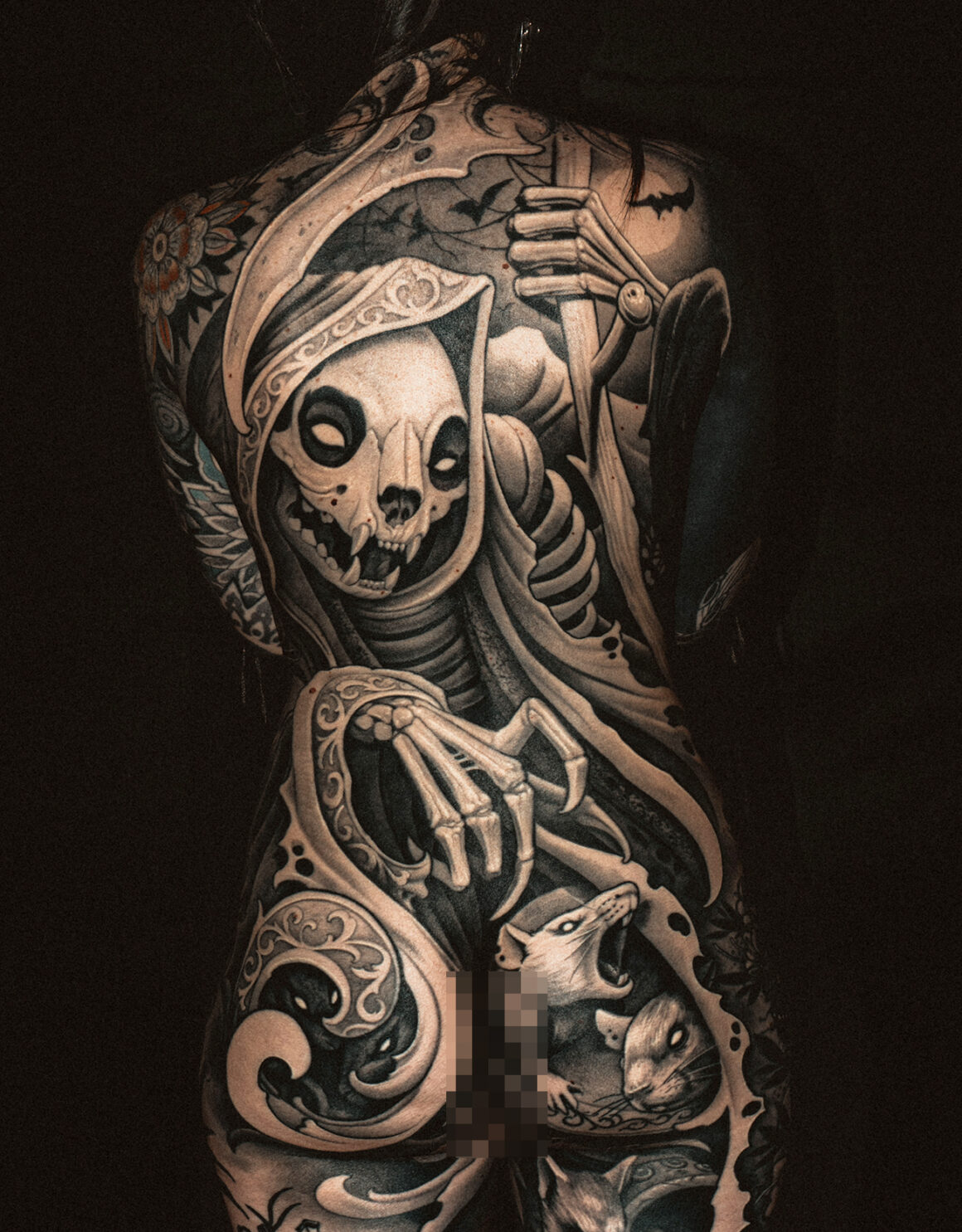
Sixty-seven clients answered his invitation to a spectacular photo shoot and party in Munich, but that was only a portion of the 150 men and women Julian had originally invited. Julian didn’t only invite his and his colleague Basti’s clients, but also many friends and fellow tattoo artists to celebrate this extraordinary gathering of finest tattoo art.
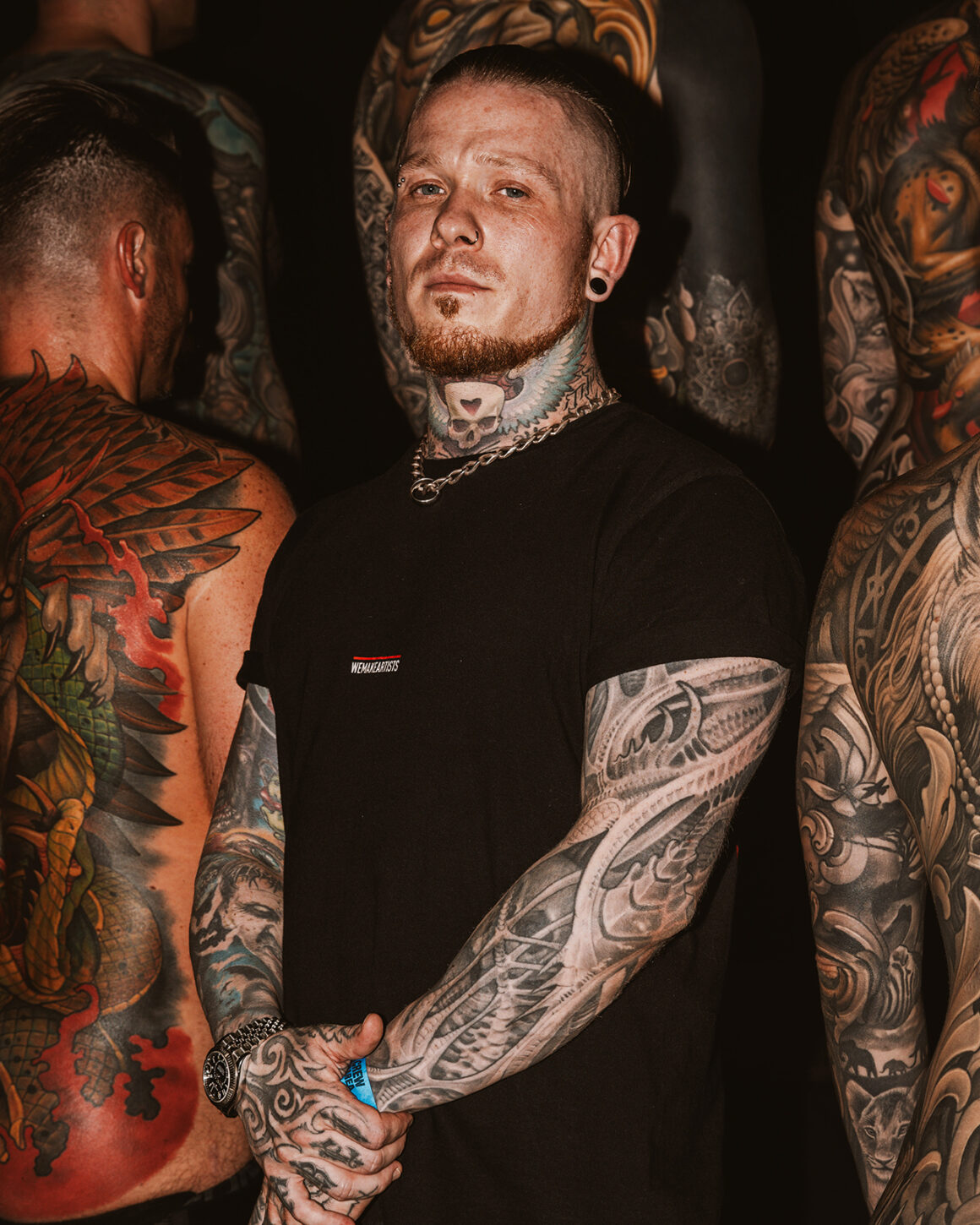
Julian explained: “These are not all my clients – just a fraction! Many of my former clients couldn’t make it because they live far away, have jobs, families, or other obligations that kept them from joining us.
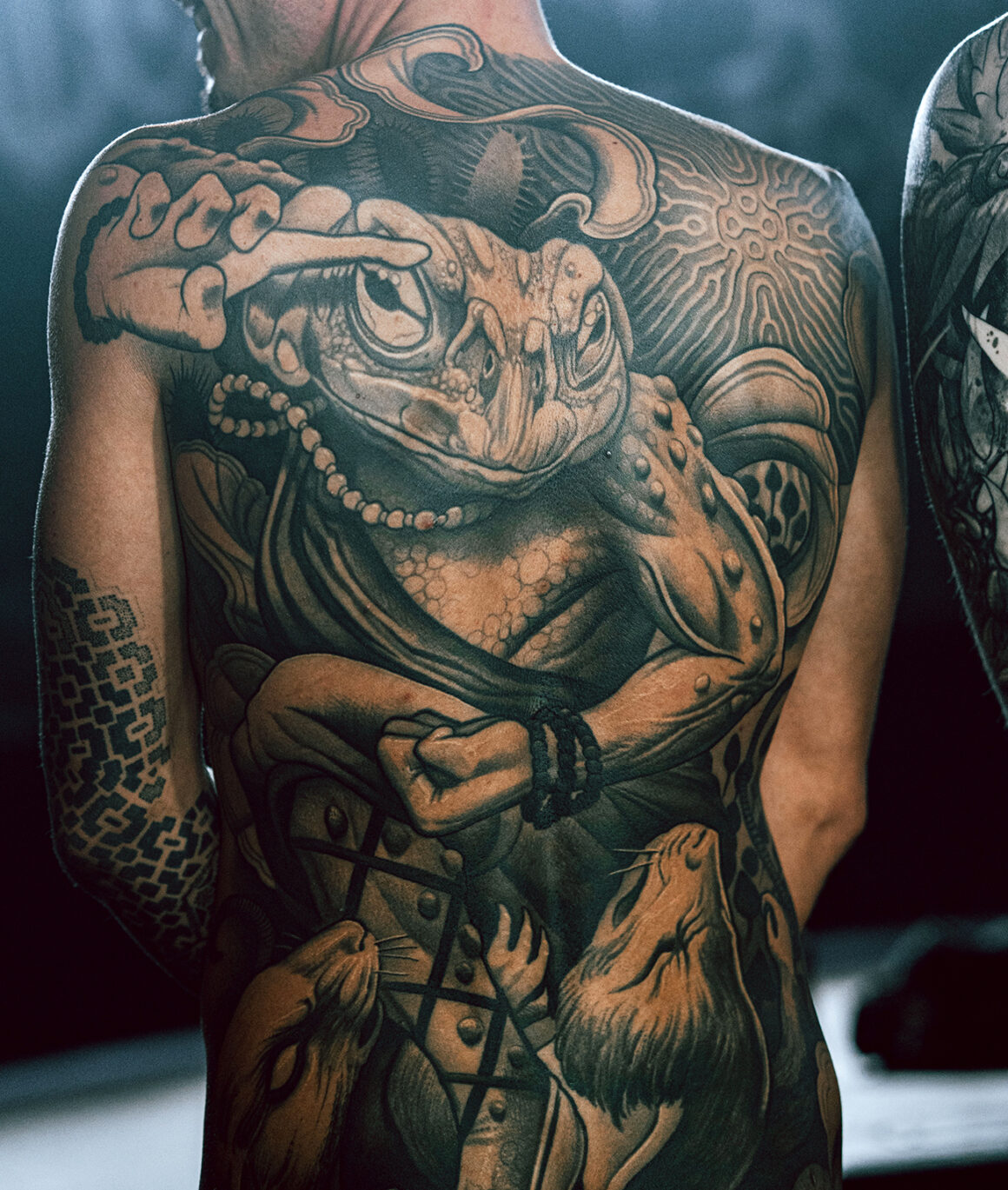
However, many of those who did come didn’t let time or distance stop them from returning to the place where they received their backpiece or even full-body tattoo. One client flew in from Detroit, another from Japan; there were customers from England and Wales, and of course from Switzerland, Austria, and Germany. One Scandinavian client had to fly four hours to Oslo, then to Copenhagen, and finally to Munich to be part of this incredible event – now that’s real dedication and commitment!

“You have to bear in mind that in some cases it was five, eight, or even ten years ago that I tattooed these people, and yet the connection is still so strong – that made me incredibly happy, and it truly means a lot to me. When I saw all of them standing there right in front of me, my knees went weak. That was a very emotional moment.”
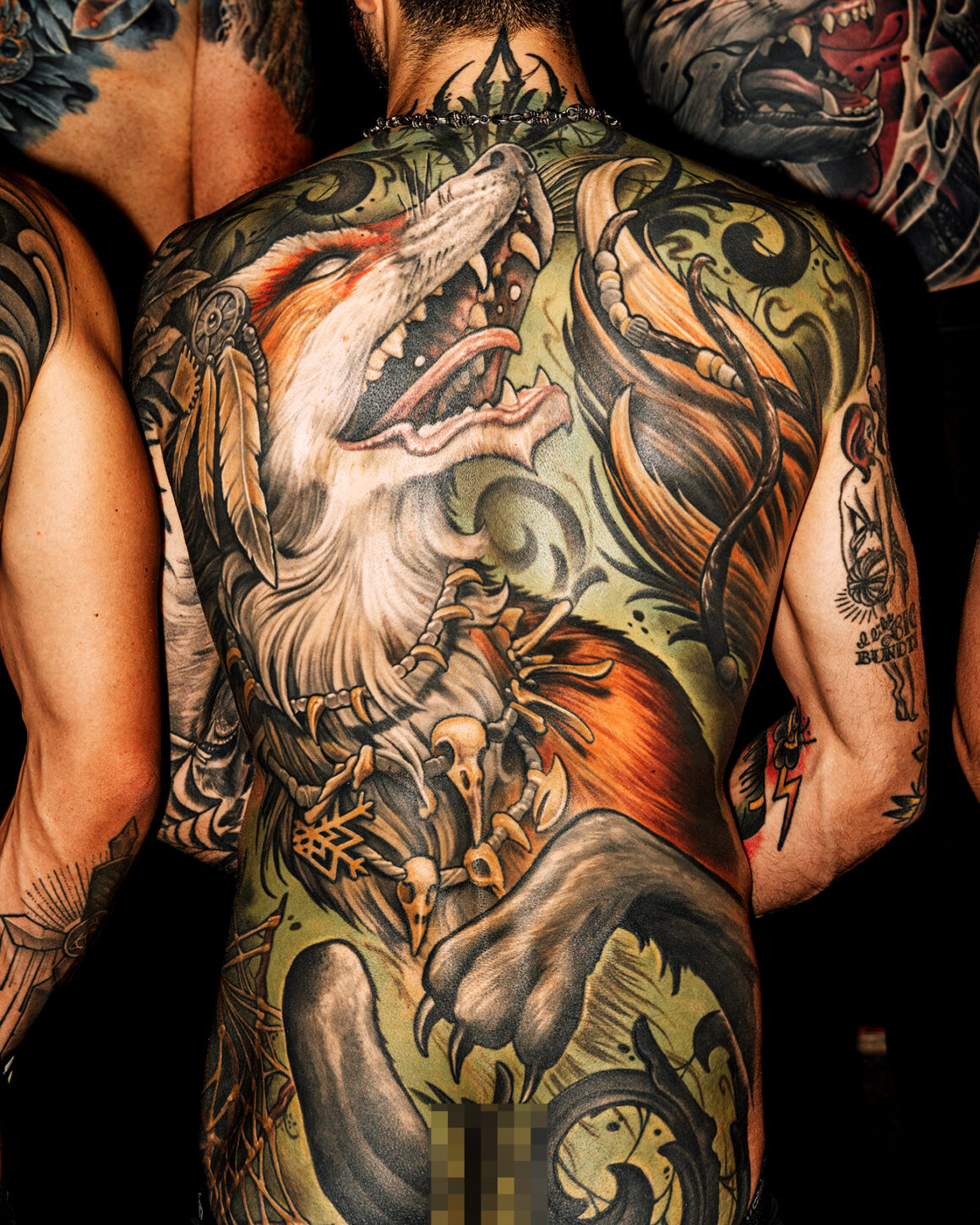
What’s especially striking when you look at all these large-scale tattoos is that, even though Julian has a unique signature style, he clearly isn’t limited to one subject or genre.
“I remember when I was a young tattooist, I once spoke with a well-known artist famous for his dark horror tattoos. I told him I’d probably never make it far because I enjoyed doing all kinds of different designs and could never settle into one style. But he told me to keep doing exactly that. He said he’d reached a point where he felt like all he ever did were skulls with horns, skulls with worms, devils with horns, or devil-skulls with horns and worms… so he told me that specializing too much can kill both your creativity and your motivation.”
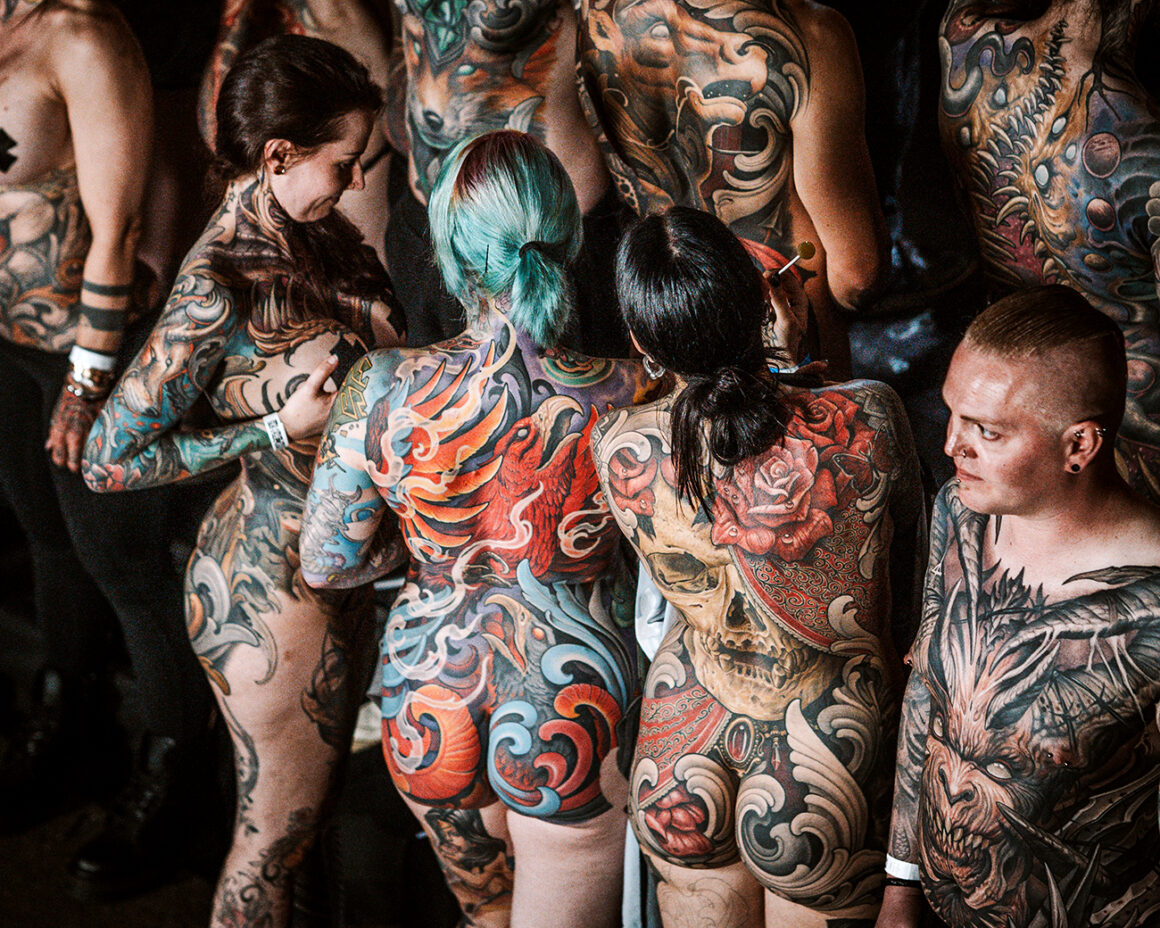
So Julian decided it was more important to keep doing what he enjoyed: staying open to everything from dark, morbid, and blasphemous black and grey tattoos to colorful, cute, playful Care Bears. When it comes to taking on new projects, Julian loves selecting design requests that are especially challenging.
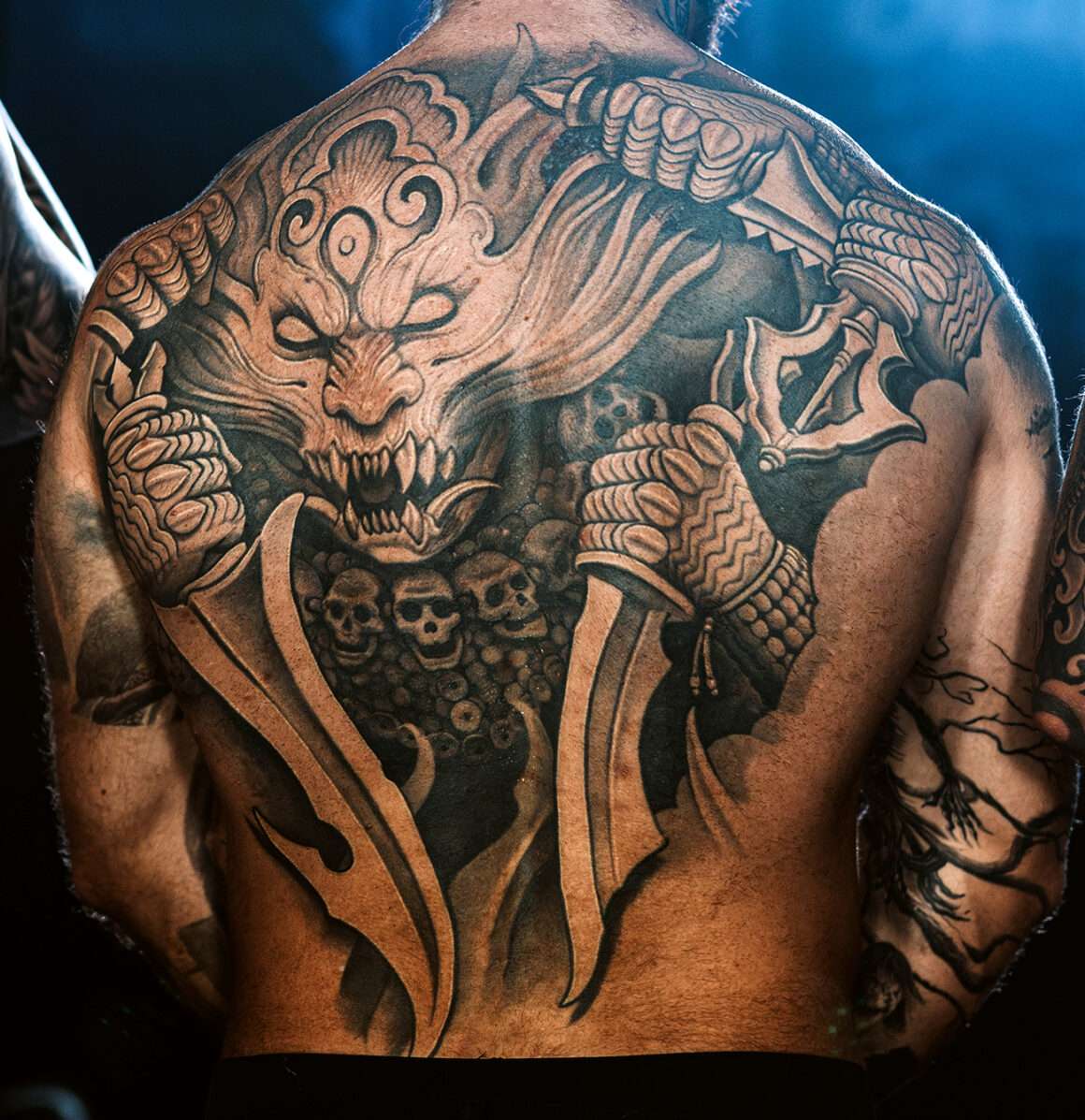
“One day, a potential customer asked for a mermaid in space with pink stucco ornaments,” he recalls. “Nobody in the shop wanted to take on such a weird design – but I loved I loved giving it a try! So many designs get tattooed again and again, so I love doing something new. I’ve heard from a lot of artists who are frustrated and sad because they end up doing the same things over and over. I’ve never regretted staying open-minded and doing what I love. This way, it never gets boring.”
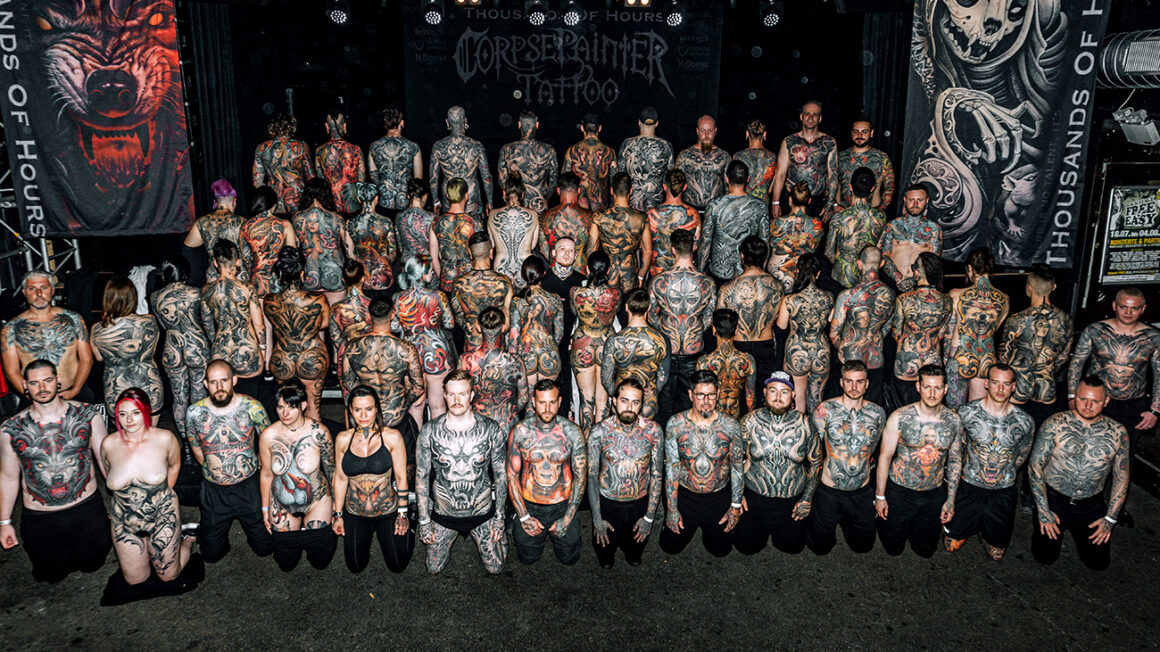
When you look at the sheer number of people involved – and keep in mind that this is not even half the backpieces and bodysuits Julian has done – and that most of them were created in just the last ten years, you can’t help but wonder how fast he must work to have achieved such an enormous output.
Julian’s answer is simple:
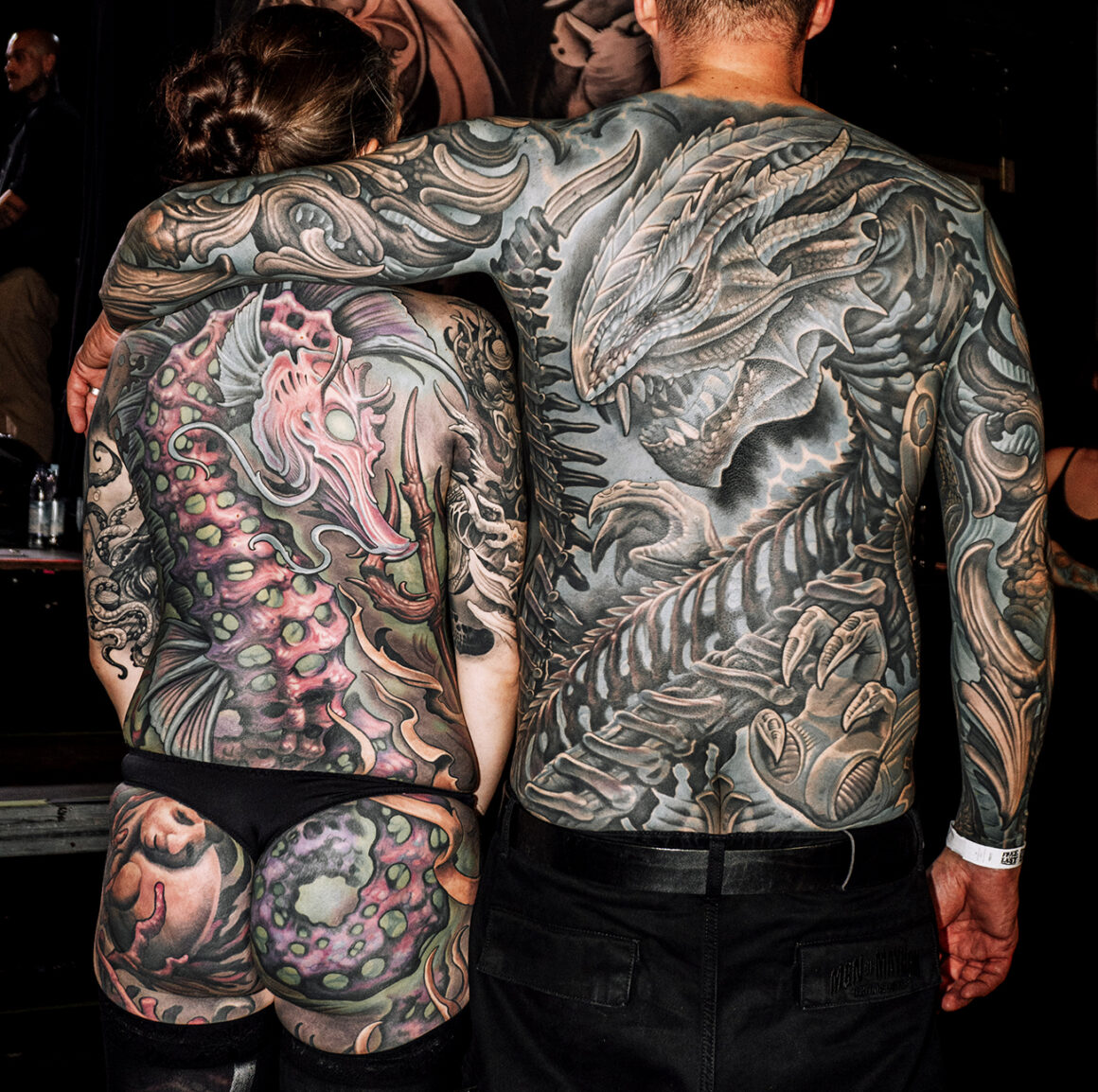
“Just imagine an old granny who’s been crocheting all her life – it’s just natural that due to her long experience she’s going to crochet a lot faster than someone who started three years ago!” And that brings us to the title Julian gave this extraordinary event:
“There is no talent – just thousands of hours!”
He firmly rejects compliments that paint him as prodigy, or someone gifted with innate talent. In fact, it annoys him. For Julian, attributing his success to some god-given gift ignores the incredible amount of hard work behind it.

“You can literally see, in the number of tattoos in these pictures, how much work I had to put in to get where I am today,” he says.
“I once heard that it takes about ten thousand hours to master a skill, like becoming a carpenter. If I had spent all the hours I put into designing and tattooing chest and backpieces on carving pumpkins or knitting sweaters, I’d probably be a world-champion pumpkin carver or a master knitter by now.”

So does Julian deny the existence of talent altogether?
I think ‘talent’ is just another word for passion. If you have a passion for something, people often mistake that for talent. But really, if you’re passionate enough to keep doing something for thousands of hours, you’ll become just as good as anyone else who’s put in that level of time and effort.
But calling it talent is just an alibi for people who don’t want to invest that amount of time and effort.
You have to sacrifice something. I sacrificed my life in the true sense of the meaning. In my first ten years of tattooing, I gave up snowboarding, playing guitar, I neglected my friends and my girlfriend. I put everything else aside to become the artist I wanted to be
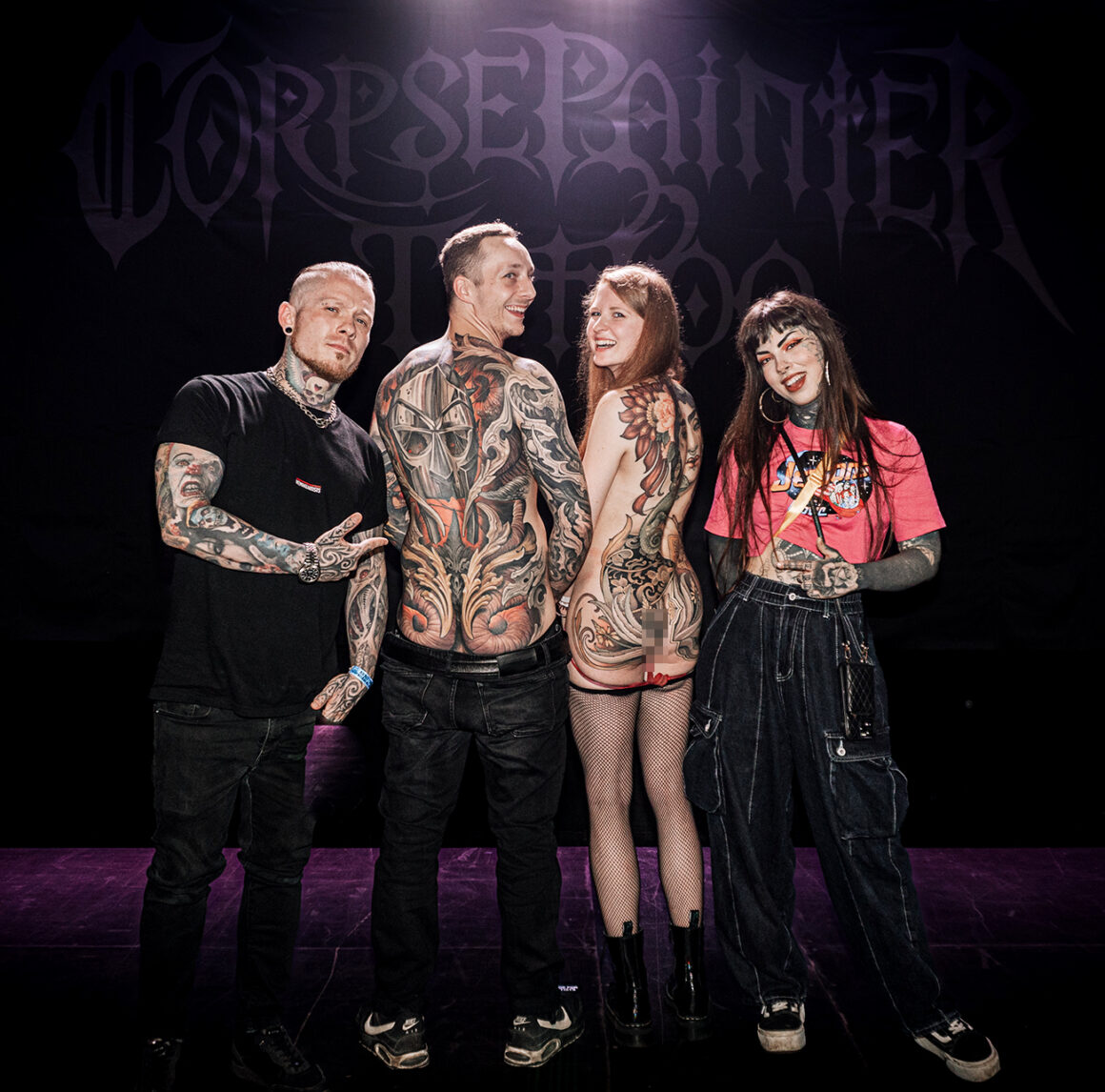
So when Julian refuses to be called a natural, it’s not out of modesty – quite the opposite. He simply wants the hard work he put in his career to be recognized.
“Acknowledging what I actually did to get where I am today means so much more to me than being praised for some supposed divine gift I supposedly received for free without having earned it,” he explains.
Talking about his clients, Julian recalls jokingly when David Rinklin, aka Neon Judas, once called him ‘the Slaughterer of Venray’,” referring to a convention where his client had a particularly loud way of coping with pain during a long tattoo-session.
“But that was an exception. That guy really was unusually loud – and I kept asking if he was okay or wanted to stop.”
Bystanders at conventions are often concerned when Julian is tattooing a client for two or even three consecutive days.
“I always tell my clients that they can take a break anytime it’s getting too much or stop altogether.« Julian explains. »I can handle my customers’ pain because I myself also went through a lot of pain getting my tattoos. And sometimes during a tattoo session I think, sure, that’s very unpleasant right now, but I know how proud and happy they will be when it’s over and they’ll look at themselves in the mirror. And I know that then they will have forgotten all of the pain. When a tattoo is finished, and the client realizes how much they were able to take, how strong they were throughout the process – those are really emotional moments.
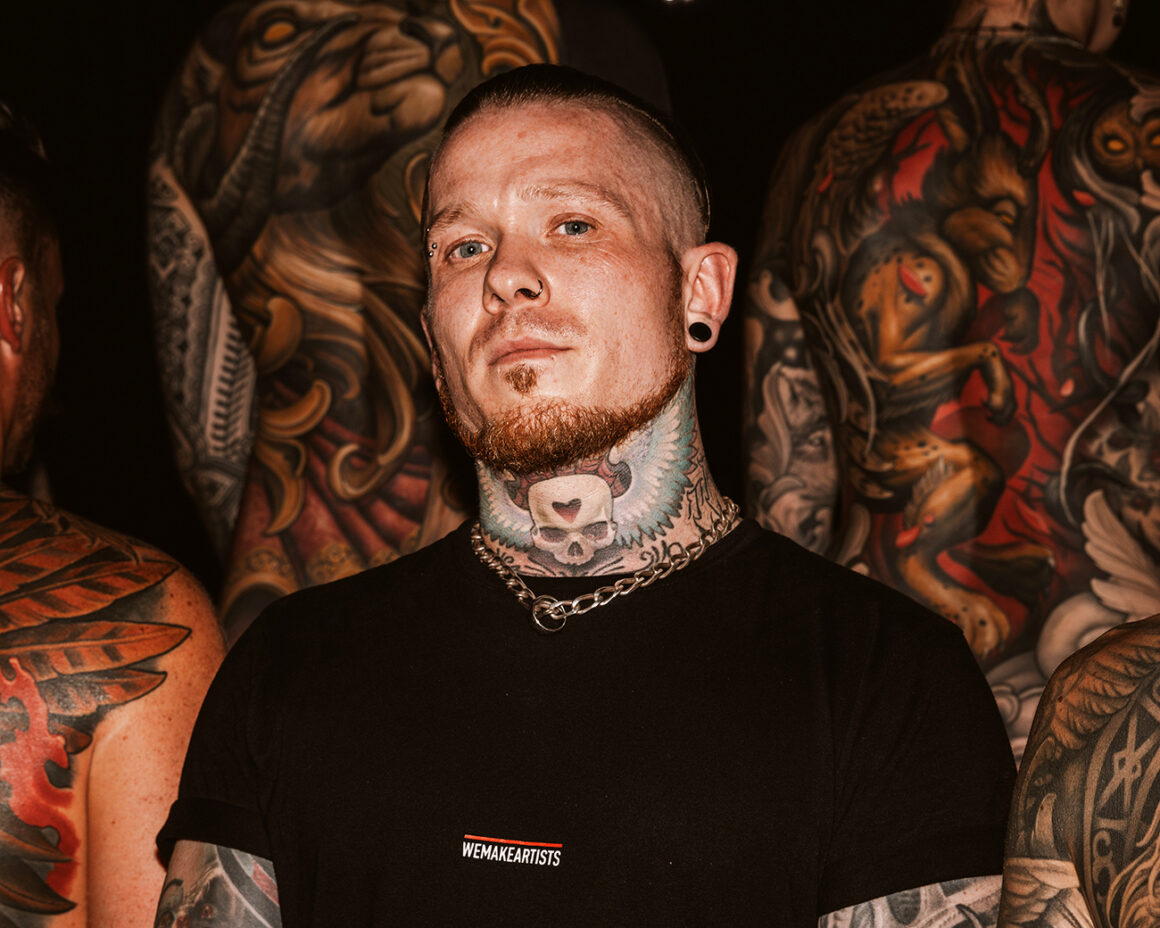
Looking back at what he’s achieved so far, Julian is clearly satisfied. When the tattoo is done and the clients reali ze how much they can take, when they realize how strong they were going through this process, these are really great and emotional moments!«
Looking back at what he’s achieved so far, Julian is clearly satisfied.
“I don’t think I’d change anything. I think I can keep doing this the way I did it till now for another twenty years. Well, maybe I’d take one or two days off per week…« he adds.
One thing is for sure: if Julian does another photo shoot in twenty years, he’s definitely going to need a much bigger venue!
